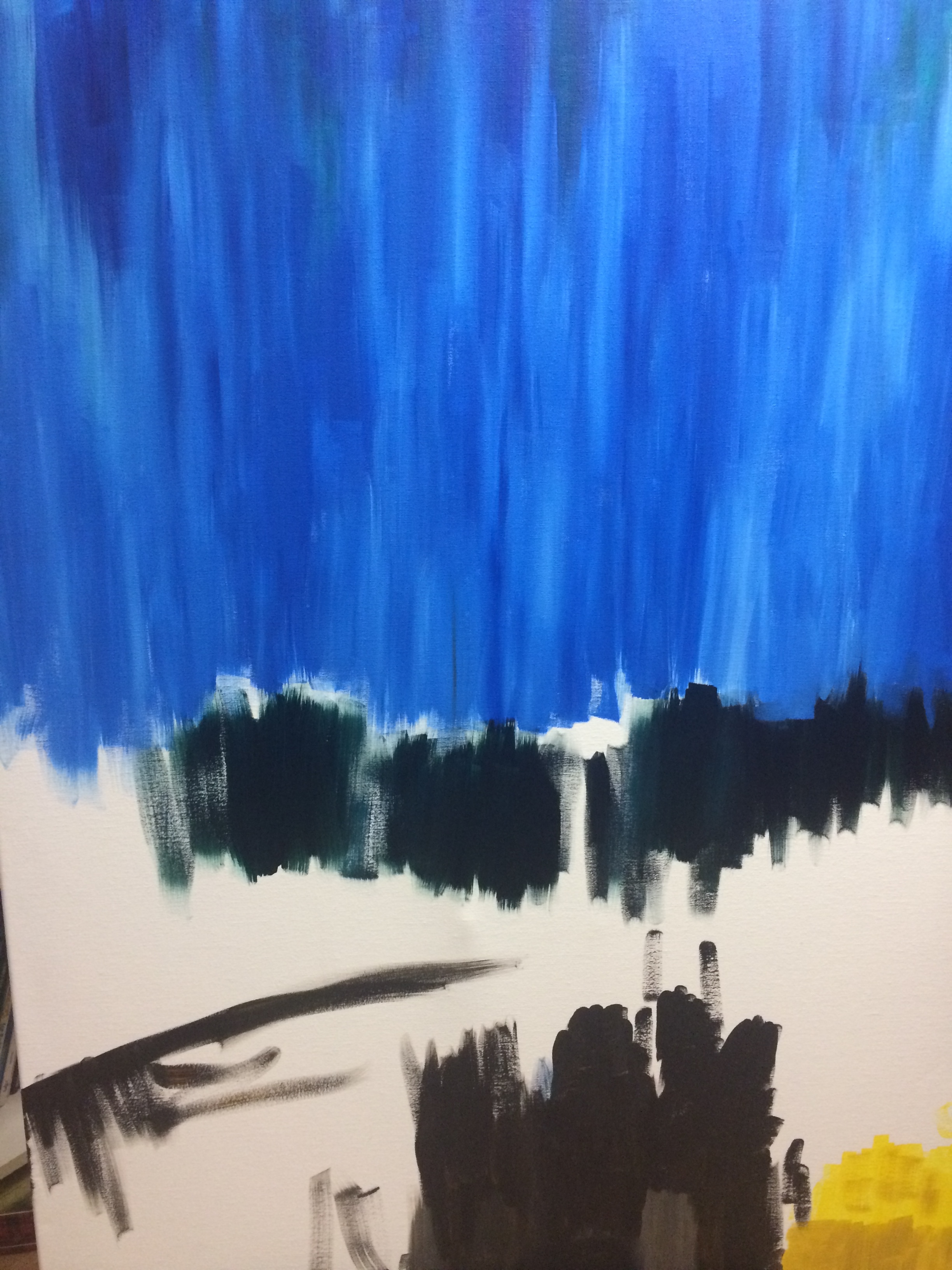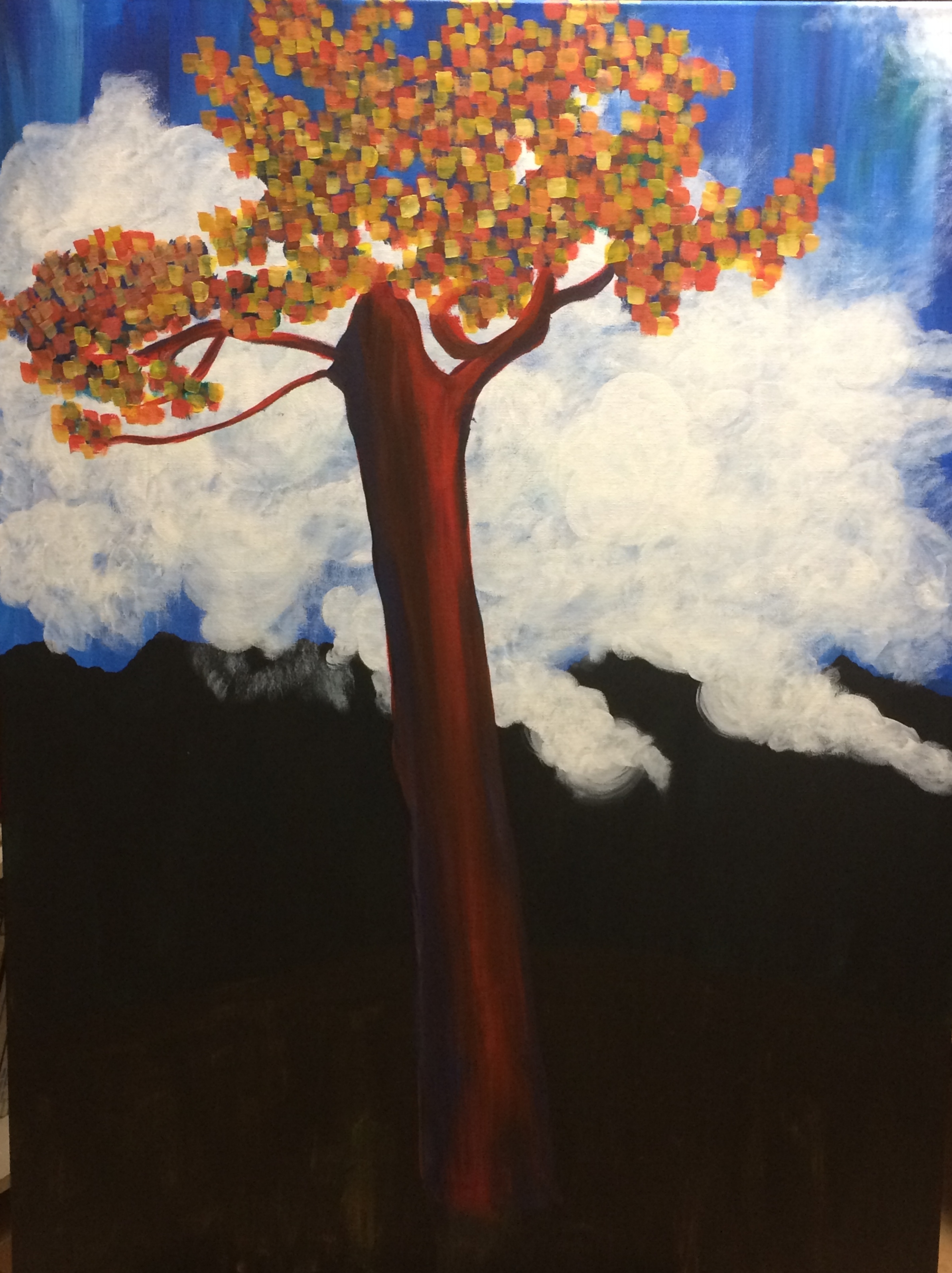Featured Art: Dual Complexity
Woohoo! You get to see this first! This week I created a video explaining what inspired the creation of my painting Dual Complexity. I’m sharing this with you first (well, technically YouTube first, but that’s only because I need to put it on YouTube so that I can share it here).
I finally found the courage to talk about this painting for the strangest reason. A few weeks ago I was in a workshop with other psychic mediums where we took a few minutes every day of the workshop to practice with the other students. One person who was reading my aura told me about this “duality” in my personality, and how I often feel that most of the people in my life only know one half of me.
I created this painting in 2018, so at the time that I created this video in 2021, nearly three years have passed. Wow! No one else had ever recognized this about me before, and when I created this painting and gave it its name, no one truly understood it. Possibly I didn’t even fully understand it yet. This is why I love being part of the psychic mediumship community. We know each other even when we have never met before.
Getting back to my happy place
In the summer I enjoy painting outdoors, but in the winter I paint from photographs that I’ve taken during my travels. I travel to California often and I started taking pictures of bird of paradise flowers on one of my trips to Los Angeles. The following Spring I started painting from those photographs.
The Bird of Paradise Flower series was my first body of work based on the study of a single subject matter. Although the first one I painted was very simple, the more paintings I created, the more details I explored.
In the summer I enjoy painting outdoors, but in the winter I paint from photographs that I’ve taken during my travels. I travel to California often and I started taking pictures of bird of paradise flowers on one of my trips to Los Angeles. The following Spring I started painting from those photographs.
The Bird of Paradise Flower series was my first body of work based on the study of a single subject matter. Although the first one I painted was very simple, the more paintings I created, the more details I explored. I also found myself experimenting with backgrounds and color choices. In the first part of the series I completed 9 bird of paradise flower paintings. Then I had other ideas percolating in my head and I moved onto other projects.
The following winter I had some issues in my studio including flooding (don’t worry, nothing was ruined). I took this as an opportunity to move into a shared studio space with other artists. I had been working on my own for a long time, so it was nice to be surrounded by creatives. However, the artist side of my brain didn’t seem to agree with the social part of it.
For the first month I found myself making less than interesting work. I experimented with a few subject matters, but everything seemed completely out of my style. Even the flower paintings I made were not up to par with my other flower paintings. I was creatively lost. I was having a hard time connecting to my work in this new space.
In my despair I printed out the pictures I had taken of the bird of paradise flowers in Los Angeles. I was hesitant to start. What if I had forgotten how to paint these majestic flowers? What if they didn’t look like the ones I had previously made?
However, I did what I usually do. I pushed my fears aside for the love of painting. I slowly started to feel myself sink into my happy place. My art companions were amazed at what I was creating. This was working. I wasn’t trying to create something unique or meaningful. I was simply creating a subject that speaks to me with colors that I love. I had shut out everything else around me and created something beautiful. The painting was A Bright Soul. I was creating something familiar but in a new way. It gave me the momentum to make paintings that I loved again.
“Radiant Plenitude” is my solo exhibition of bright and bold paintings which was on display at the Ocean City Arts Center in March 2019. Among the paintings in the collection is the Bird of Paradise Flower series. Each piece and each body of work carries its own significance. When I look at the Bird of Paradise Flower paintings I’m reminded of courage, comfort and the happiness they bring.
How Squareism Came to Be
I’m not 100% classically trained. I’ve had many good art instructors who have taught me how to create shadows, make shapes with color, and balance negative and positive space. However, once I left their instruction I had to experiment a lot with my technique.
…
I’m not 100% classically trained. I’ve had many good art instructors who have taught me how to create shadows, make shapes with color, and balance negative and positive space. However, once I left their instruction I had to experiment a lot with my technique.
How I started Tree and Mountains ©Francesca Bandino
Through this experimentation I developed a style I like to call Squareism. It all started with my painting, Tree and Mountains. The picture was dark and the details weren’t clear. I started as usual with long visible brushstrokes for the background. Then I added the mountains and the clouds. I knew I didn’t want my tree to be black or grey, so I stepped back and studied my painting for quite a while. That day I decided to work on something else. I needed more time and I couldn’t solve my problems with that painting in that moment.
I thought about it and journaled about it at night. In my mind I saw a red tree. It was whimsical and would look bright against the background. You see, I don’t always like to paint what’s in front of me. I want to make my world more colorful.
This image shows how I started the red tree ©Francesca Bandino
The next day I went back to work and added layers of reds and blue. I had created the tree I saw in my mind, but I still needed leaves. What did these leaves look like? I couldn’t tell. The image was just too dark.
What I created was a cloud of purple and blue – not exactly what I was going for. Ok, what would look good with this tree? I decided on yellow and red leaves, like the ones that indicate that autumn has arrived. I had beautiful new brushes, but they weren’t quite right for the kind of leaves I was trying to make.
I dipped my flat brush into my yellow paint and made a short brush stroke, then another. Then I dipped it into the red paint and made some more. I stepped back and looked at what I had created. I liked it! It gave a certain amount of depth to the foliage that changed as I moved around my studio. Still, something was off-balance, so I added some squares around the tree where the soil would be. I made green and brown squares, but not too many.
Almost done...just about to add the soil. ©Francesca Bandino
At each one of my shows, those who see my work are surprised by my Squareism paintings. They resemble some post-impressionistic styles like pointillism, but they aren’t quite the same. I don’t get the same reaction from people who see this style in pictures because it doesn’t have the same effect. The cool thing about my Squareism technique is that your distance or angle from the painting can change the way the colors blend.
I knew I was onto something with this style and the fact that I had started it on a 40x30 inch canvas was liberating. I went to work finding pictures I had taken on my travels of interesting trees so I could incorporate them into my collection. I don’t always use Squareism in my paintings because it won’t always help me accomplish what I envision. Instead it’s more like a tool that I get to keep in my back pocket for another day.
Painting Outdoors
In art we often talk about inspiration. Going out, seeing different sights and experiencing new things can contribute to our inspiration because they open our mind to other possibilities. In July 2017 I started painting in my garden, and I discovered that it drives me to paint endlessly.
In art we often talk about inspiration. Going out, seeing different sights and experiencing new things can contribute to our inspiration because they open our mind to other possibilities. In July 2017 I started painting in my garden, and I discovered that it drives me to paint endlessly.
I’ve heard that if you really want to paint then you’ll paint anywhere. Though this is mostly true, I don’t believe that I paint at my best from anywhere. In my previous life, I wasn’t happy being stuck indoors and depriving myself of sunlight. So why was I staying indoors now that I had the power to choose if to go outside to work?
Maybe it was habit or maybe it was the fact that I didn’t want to move all of my materials outside. Regardless, I stayed in my basement studio for a good portion of the summer. In fact, I had attempted to paint outside once before, but I did it all wrong. I was painting from a picture under the 2:30 pm sun. The light was reflecting off my painting while the colors on my palette dried too quickly for me to use them. Painting like this was not enjoyable.
So the second time I attempted to paint outside, I made sure to paint in the shade and while it was still cool out. Painting became my morning priority. Suddenly nothing could pull me away from my canvas – except maybe lunch.
Outside, everything around me is inspiration and I’m able to use shade to my benefit. When the sunlight moves directly into my eyes or onto my painting, I simply pause that painting and move to a new spot to work on a different painting. The interruption allows me to decide what looks best on my canvas, using the plant or flower only as inspiration for what I create.
Pictures don’t always show all the details I want to see. So when I’m painting from one of my photographs, I have to fill in the blanks with my imagination. While painting from a picture forces me to invent, when I’m painting outside I’m only responsible for creating. I don’t think that one approach is better than the other, they’re simply different. When I paint inside, I study my canvas. I study the colors and shapes and how they interact. I dream of those paintings and journal about them. I create a more colorful and bright world to compensate for what I don’t have indoors in the winter months.
When I paint outside I don’t go through the same process. I merely paint what I find interesting. I sit on the grass or in a chair, lay some colors that I see onto my palette, and then I paint what I want to focus on. My colors aren’t mixed to be realistic and match what’s in front of me. They’re mixed in a way that expresses what I feel when I look at that plant or flower in that moment. There’s very little afterthought. I journal about what I’ve painted and move on to the next painting. It’s simple.




















